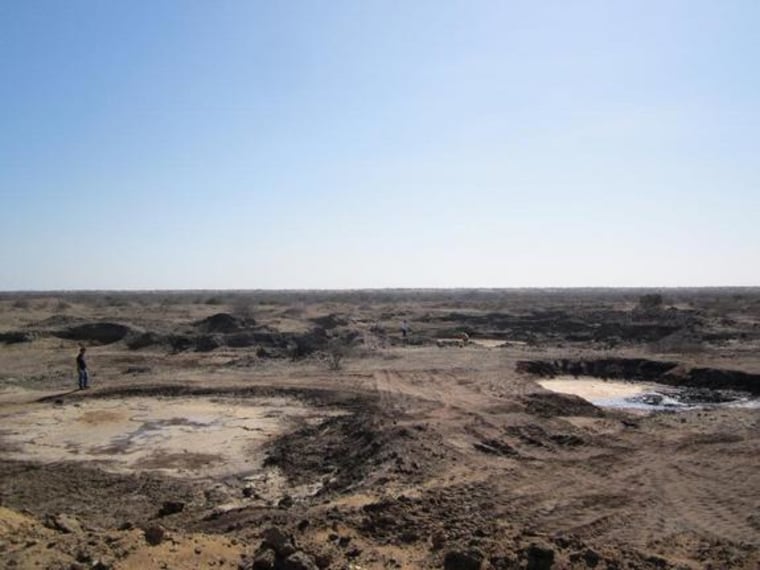A dusty, windy desert in extreme northwestern Peru was once a grassland, replete with hundreds of songbirds.
But this grassland, which may have been dotted with seasonal dry forests, was also a trap. Tar seeps bubbling up from the oil-rich ground snared animals, including saber-toothed cats, dire wolves and jaguars. Now, researchers have analyzed 625 bird fossils and identified 21 species of birds, including three that are now extinct, which also succumbed to the sticky seeps. The findings, published Sept. 9 in the journal The Auk: Ornithological Advances, hint at a landscape that was far more diverse than the one that exists there today.
"It suggests that not all that long ago, the neotropics [the tropical zone of the Americas and temperate zone of South America] had more songbird species than even today," said study author Jessica Oswald, a postdoctoral researcher at Louisiana State University. That's impressive, Oswald told Live Science, because the neotropics are home to the greatest number of songbird species today.

The newly analyzed bird fossils date back to the late Pleistocene epoch, about 15,000 years ago, when huge mammals like giant sloths roamed the land alongside armadillolike Glyptodons the size of Volkswagen Beetles. [10 Extinct Giants That Once Roamed North America]
The unlucky birds were caught in the Talara tar seeps, which are often covered by water or dust, luring unsuspecting animals to their doom.
"When you go out there today, you can see feathers along the outside of some of these tar pools," Oswald said. "There is a photo from a monograph published in 1979 of a goat stuck in the tar. So you go out there, and there is carnage."
Related: Avian Cholera Suspected After 2,000 Geese Found Dead in Idaho
Previous studies had catalogued the fossils of nonsongbirds like geese and ducks that were found at the site. The data from this research, put together with the information from the mammal remains, paints a picture of a grassy Pleistocene savannah dotted with ponds or marshes that attracted animals. The tar seeps also held the remains of a few species that might have thrived in dry forests, which are tropical and subtropical forest environments that have long dry seasons in between periods of rain.
The songbird fossils filled in this picture. Eight of the 21 species identified were blackbirds, Oswald said, which makes sense because blackbirds like marshy habitat and often hang around large mammals. Oswald and her colleague also identified three extinct species. One was a troupial, a larger relative of the orange-and-black national bird of Venezuela. Another was a species of cowbird, part of the genus Molothrus, but much bigger than the common brown-headed cowbirds still seen in backyards today, Oswald said.
The third extinct species was a blackbird, Euphagus magnirostris, which has also been found in Venezuela and at the famous La Brea tar pits in California.
This is a condensed version of a report from Live Science. Read the full report. Follow Stephanie Pappas on Twitter and Google+. Follow Live Science @livescience, Facebook& Google+.
More from Live Science
- In Photos: Rare Web Structure in Peruvian Amazon
- In Images: Graveyard of Ichthyosaur Fossils Found in Chile
- Wipe Out: History's Most Mysterious Extinctions
Copyright 2015 LiveScience, a Purch company. All rights reserved. This material may not be published, broadcast, rewritten or redistributed.
